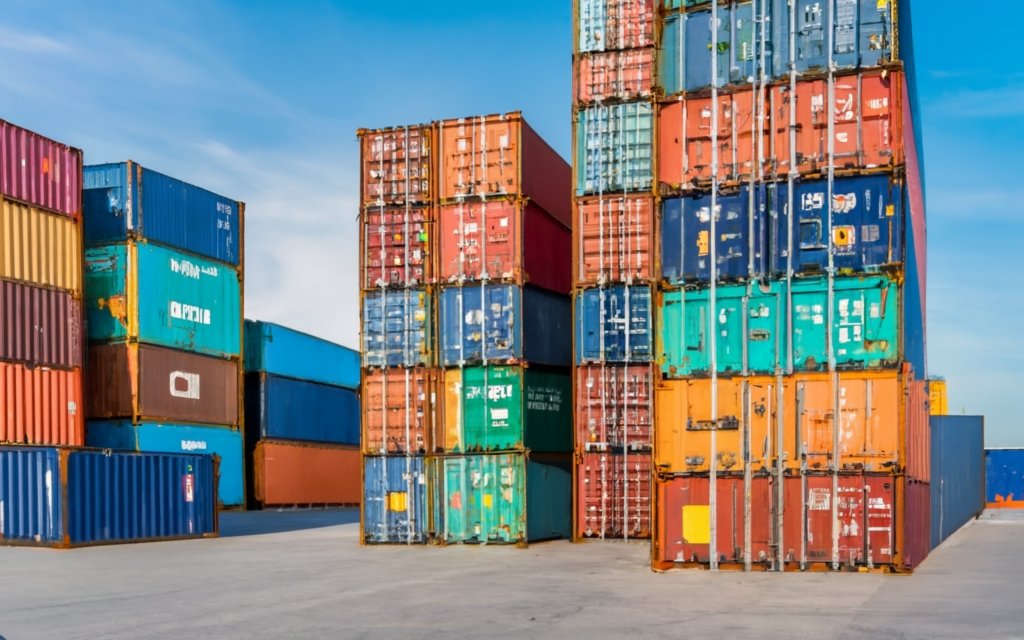Are you confused about standard shipping? Look no further! In this ultimate guide, we will walk you through everything you need to know about standard shipping. Whether you’re a business owner or an online shopper, understanding how standard shipping works is essential to streamline your shipping process and keep your customers happy.
From defining standard shipping to exploring its pros and cons, we delve into the nitty-gritty details of this popular shipping method. You’ll learn about average delivery times, cost considerations, tracking options, and much more. We also provide expert tips on how to optimize your standard shipping strategy to enhance customer satisfaction and increase efficiency.
With the rise of e-commerce, shipping has become a critical element in the success of businesses. Understanding the intricacies of standard shipping can help you make informed decisions and improve your overall shipping experience. So, whether you’re shipping goods internationally or domestically, join us on this comprehensive journey to unravel the mysteries of standard shipping and gain mastery over your shipping operations.
How does standard shipping work?

Standard shipping is the most common and widely used shipping method. It is a cost-effective option that offers a balanced approach between delivery time and price. When you choose standard shipping, your package will be transported using the regular mail or ground transportation services, depending on the destination. Standard shipping is typically slower than expedited shipping, but it is suitable for non-urgent shipments.
One of the key advantages of standard shipping is its affordability. Since it doesn’t prioritize speed, standard shipping rates are generally lower compared to expedited options. This makes it an attractive choice for both businesses and customers looking to save money on shipping costs. However, it’s important to note that delivery times can vary depending on factors such as the distance between the sender and the recipient, as well as any potential delays in customs or local postal services.
Standard shipping is often the default shipping method offered by online retailers. It is convenient for both the seller and the buyer, as it simplifies the shipping process. As a buyer, you can expect your package to be delivered within a reasonable timeframe, while sellers can benefit from predictable shipping costs and a standardized process.
Standard shipping vs. expedited shipping

When it comes to shipping, one of the common dilemmas is choosing between standard shipping and expedited shipping. While standard shipping offers a balance between cost and delivery time, expedited shipping prioritizes speed and is ideal for urgent shipments. Let’s take a closer look at the differences between the two options.
Standard shipping, as mentioned earlier, is the regular shipping method that offers a more affordable price point. It is suitable for non-urgent shipments where delivery time is not a critical factor. Standard shipping can take anywhere from a few days to a couple of weeks, depending on various factors such as the distance, carrier, and any potential customs clearance processes.
On the other hand, expedited shipping is designed for time-sensitive shipments. It guarantees faster delivery times and is often used for urgent orders or perishable items. Expedited shipping services utilize express delivery networks and prioritize the package to ensure it reaches its destination quickly. However, it’s important to note that expedited shipping comes at a higher cost compared to standard shipping.
The choice between standard shipping and expedited shipping ultimately depends on your specific needs and priorities. If cost is a significant factor and you can afford to wait for your package, standard shipping is a reliable and economical option. However, if time is of the essence and you need your package to arrive quickly, expedited shipping is the way to go.
Factors that affect standard shipping times

While standard shipping provides a cost-effective and convenient option for shipping goods, it’s important to consider the factors that can affect delivery times. Understanding these factors can help you manage your expectations and make informed decisions when it comes to shipping.
1. Distance: The distance between the sender and the recipient plays a significant role in determining the duration of standard shipping. Longer distances require more transit time, especially for international shipments. It’s essential to factor in the distance when estimating the delivery time for your package.
2. Carrier: The shipping carrier you choose can impact the delivery time of your package. Different carriers have varying levels of efficiency and coverage. Some carriers may have better infrastructure and resources, allowing them to deliver packages faster than others.
3. Peak seasons and holidays: During peak seasons and holidays, such as Black Friday or Christmas, shipping volumes increase significantly. This surge in demand can lead to delays in standard shipping. It’s important to plan ahead and consider these busy periods when estimating delivery times.
4. Customs clearance: For international shipments, customs clearance is an essential step in the shipping process. Depending on the destination country and the nature of the goods being shipped, customs clearance can take time. Delays in customs can result in longer delivery times for standard shipping.
5. Weather conditions and natural disasters: Unforeseen circumstances such as extreme weather conditions or natural disasters can disrupt transportation networks and cause delays in standard shipping. It’s important to consider these factors, especially when shipping to areas prone to such events.
By understanding these factors, you can better manage your expectations and plan your shipping strategy accordingly. It’s always a good idea to communicate with your shipping carrier and stay updated on any potential delays or disruptions that may affect your standard shipping.
Understanding shipping zones and delivery estimates

Shipping zones play a crucial role in determining delivery estimates for standard shipping. Understanding how shipping zones work can help you estimate the delivery time for your package and manage customer expectations effectively.
Shipping zones are geographic regions that carriers use to classify destinations based on their proximity to the origin. The further the destination is from the origin, the higher the shipping zone. Carriers typically have different shipping rates and delivery timeframes for each shipping zone.
To determine the shipping zone for a specific destination, carriers consider factors such as the zip code or postal code of the origin and destination. By inputting these details, the carrier can classify the destination into the appropriate shipping zone.
Delivery estimates for standard shipping are based on the shipping zone and the carrier’s average delivery time for that zone. For example, a package shipped within the same city or nearby may be classified as Zone 1 and have a shorter delivery time compared to a package shipped to a different state or country, which may fall into a higher shipping zone and have a longer delivery time.
It’s important to note that delivery estimates provided by carriers are not guarantees but rather estimates based on historical data and general trends. Factors such as weather conditions, customs clearance, and carrier capacity can affect actual delivery times. However, shipping zones provide a framework for understanding the general timeframe for standard shipping.
Tips for tracking your standard shipping package

Tracking your standard shipping package is essential to monitor its progress and ensure it reaches its destination. Most shipping carriers provide tracking services that allow you to track your package from the moment it is picked up until it is delivered. Here are some tips for effectively tracking your standard shipping package:
1. Obtain a tracking number: When you ship your package, make sure to obtain a tracking number from your shipping carrier. This tracking number is unique to your package and allows you to access real-time updates on its whereabouts.
2. Use online tracking tools: Most shipping carriers have online tracking tools on their websites or mobile apps. Simply enter your tracking number, and you’ll be able to view the current status of your package, its location, and any relevant updates.
3. Set up notifications: Many carriers offer notification services that alert you via email or SMS about the progress of your package. You can customize these notifications to receive updates at specific milestones, such as when the package is out for delivery or when it has been successfully delivered.
4. Check for delays or exceptions: During the shipping process, there may be instances where your package encounters delays or exceptions. These can include customs clearance delays, unsuccessful delivery attempts, or address issues. Regularly check the tracking information for any updates or exceptions that may affect the delivery of your package.
5. Contact the carrier for assistance: If you have any concerns or questions regarding your standard shipping package, don’t hesitate to contact the shipping carrier’s customer service. They can provide you with additional information and help address any issues that may arise during the shipping process.
By actively tracking your standard shipping package, you can stay informed about its progress and address any potential issues promptly. This helps ensure a smooth shipping experience and provides peace of mind for both the sender and the recipient.
Common challenges and solutions in standard shipping

Standard shipping, like any other shipping method, comes with its own set of challenges. Being aware of these challenges and having strategies to overcome them can help you navigate the shipping process more effectively. Here are some common challenges in standard shipping and their solutions:
1. Delivery delays: Delays in standard shipping can occur due to various factors such as weather conditions, customs clearance, or carrier capacity. To mitigate the risk of delays, it’s important to plan ahead and provide ample time for shipping. Communicate with your shipping carrier to stay updated on any potential delays and inform your customers accordingly.
2. Lost or damaged packages: While shipping carriers take precautions to ensure the safe delivery of packages, there is always a risk of packages getting lost or damaged during transit. To protect against this, consider purchasing shipping insurance for valuable or fragile items. This provides coverage in case of loss or damage and gives you peace of mind.
3. Customer dissatisfaction: Delivery delays or other issues in standard shipping can lead to customer dissatisfaction. To mitigate this, set realistic expectations regarding delivery times and provide tracking information to customers. Transparency and proactive communication can help manage customer expectations and address any concerns they may have.
4. Inefficient packaging: Inefficient packaging can lead to higher shipping costs and increased chances of damage during transit. Ensure that your packages are properly packed and appropriately sized to minimize the risk of damage. Use adequate cushioning materials and consider using sustainable packaging options to reduce waste and environmental impact.
5. Lack of visibility: Standard shipping can sometimes lack visibility, especially for international shipments that involve multiple carriers and customs processes. To improve visibility, consider using shipping software or third-party logistics providers that offer comprehensive tracking and management solutions. These tools can provide real-time visibility into the shipping process and help you stay on top of your shipments.
By addressing these common challenges and implementing proactive strategies, you can enhance the efficiency and reliability of your standard shipping operations.
Cost considerations for standard shipping

Cost is a crucial factor to consider when choosing a shipping method. Understanding the cost considerations for standard shipping can help you optimize your shipping strategy and make cost-effective decisions. Here are some key cost considerations to keep in mind:
1. Shipping rates: Standard shipping rates vary depending on the carrier, destination, package size, weight, and shipping zone. Compare rates from different carriers to find the most competitive option for your shipping needs. Consider negotiating volume discounts with carriers if you have substantial shipping volumes.
2. Packaging costs: Packaging materials, including boxes, cushioning materials, and tape, can contribute to shipping costs. Optimize your packaging process to minimize material waste and choose packaging materials that strike a balance between protection and cost-effectiveness.
3. Shipping insurance: Shipping insurance provides coverage in case of loss or damage during transit. While it adds to the overall shipping cost, it offers financial protection and peace of mind. Assess the value and fragility of your shipments to determine whether shipping insurance is necessary.
4. Additional services: Some carriers offer additional services such as signature confirmation or delivery to a specific location, which may incur additional fees. Evaluate whether these services are necessary for your shipments or if you can manage without them to reduce costs.
5. Shipping volume: Shipping carriers often offer volume discounts for businesses with high shipping volumes. If your business regularly ships a significant number of packages, consider negotiating discounted rates with your preferred carrier. This can result in substantial cost savings over time.
By carefully considering these cost factors and making informed decisions, you can optimize your standard shipping strategy and minimize unnecessary expenses.
Standard shipping best practices for businesses

For businesses that rely on standard shipping to deliver their products, implementing best practices can help streamline the shipping process and enhance customer satisfaction. Here are some standard shipping best practices for businesses:
1. Automate shipping processes: Use shipping software or third-party logistics providers to automate shipping processes such as label generation, order fulfillment, and tracking. Automating these processes reduces the chances of errors, improves efficiency, and saves time.
2. Provide accurate shipping information: Ensure that you provide accurate shipping information, including the recipient’s address and contact details. Inaccurate or incomplete information can lead to delivery delays or failed deliveries. Implement address validation tools to minimize address-related issues.
3. Offer tracking and delivery notifications: Provide tracking information to your customers so they can monitor the progress of their packages. Additionally, consider offering delivery notifications to keep customers informed about the estimated delivery date or any changes in the delivery status.
4. Optimize packaging: Efficient packaging not only protects your products but also reduces shipping costs. Use appropriately sized boxes and packaging materials that provide sufficient protection without adding unnecessary weight or volume. Consider eco-friendly packaging options to align with sustainable practices.
5. Monitor carrier performance: Regularly assess the performance of your shipping carrier to ensure they meet your expectations in terms of delivery times, reliability, and customer service. Consider switching carriers if you consistently experience issues or if you find a more suitable option.
6. Leverage shipping analytics: Utilize shipping analytics tools to track and analyze shipping data. This helps identify trends, optimize shipping routes, and make data-driven decisions to improve shipping efficiency and reduce costs.
By implementing these best practices, businesses can optimize their standard shipping operations, provide a seamless shipping experience to customers, and gain a competitive edge in the market.
Conclusion: The importance of understanding standard shipping
Standard shipping is an integral part of the shipping ecosystem, and understanding its intricacies is crucial for businesses and online shoppers alike. By grasping the fundamentals of standard shipping, including how it works, its pros and cons, and the factors that affect delivery times, you can make informed decisions and optimize your shipping strategy.
Tracking your standard shipping packages, addressing common challenges, considering cost factors, and implementing best practices can help streamline your shipping operations, enhance customer satisfaction, and improve overall efficiency. With the rise of e-commerce and the growing importance of shipping in business success, mastering the art of standard shipping is essential to stay competitive in the marketplace.





